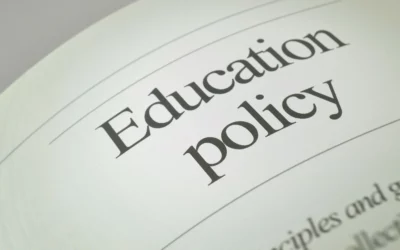
Written by William C. Duncan
October 7, 2020
One reason the debate over the nomination of a new Supreme Court justice – such as Amy Coney Barrett – can be so contentious is that so much appears to be at stake.
For instance, the Supreme Court is probably the most important decisionmaker about religious freedom in the United States. The Supreme Court also establishes legal rules for a wide range of issues – from police searches to drug policy to copyright protection – often for decades, if not permanently.
So, selecting the justices who make these far-reaching decisions takes on a significance far above that of the selection of any other government official.
How did the court’s role become so significant?
The concept of precedent
There are many factors, but the most basic reason for the court’s dominating role is the establishment of a simple concept, “precedent” – specifically, the idea that a court decision will control future decisions.
This is a simple idea built on two important features of the federal court system.
First, the job assigned to the federal courts by Article 3 of the U.S. Constitution is to apply established legal rules to “cases and controversies.” As simple as this sounds, it’s really significant. In some countries, and states in the U.S., courts are allowed to answer questions about proposed laws (e.g., a legislature can ask if a proposed law is constitutional), but the federal courts may only weigh in where there is a dispute between parties about the application of a law to a specific circumstance.
That’s why we sometimes hear about people violating a law so they can challenge that law’s constitutionality. There has to be a real dispute, and the reality or even potential for prosecution makes it real.
The second important feature of our legal system is that judges must give reasons for the decisions they make. When we hear about a court’s “opinion” or “decision” in a case, that’s what we are referring to. The court not only decides the dispute (a person who burns a flag cannot be prosecuted) but also explains why (flag burning is a form of speech, and the First Amendment precludes the government from criminalizing speech).
This is where precedent comes in. When the court has given its reasoning for a certain decision, that reasoning will govern future court decisions on the same or similar issues. That makes the court’s decisions extremely significant. Attorneys on the two sides of a dispute will be working to convince the judges that their client’s position is exactly like – or at least a logical extension of – the reasoning used in a previously decided case.
Precedent wasn’t always an accepted feature of the system. Abraham Lincoln famously questioned whether bad Supreme Court decisions should be treated as a guide to future decisions. That position, however, has been largely abandoned by most, who have accepted that when the top court has ruled, that ruling will control until the court can be prevailed upon to abandon or overrule it.
A relatively well-known example shows how precedent can work to move the law in directions it might not initially go, even without any legislative action:
- In 1965, the Supreme Court said a Connecticut law barring distribution of contraceptives violated a constitutional right of “marital privacy” by preventing spouses from using birth control (Griswold v. Connecticut).
- In 1972, the court relied on this ruling to strike down a Massachusetts law that barred distribution of contraceptives to unmarried people, saying the earlier decision applied to “the decision whether to bear or beget a child” (Eisenstadt v. Baird)
- The next year, the court said that the right recognized in the 1972 decision extended to the question of whether abortion could be prohibited and struck down the abortion laws of every state (Roe v. Wade).
So, a right to contraceptives for a married couple led to a right to make decisions about childbearing, which led to a right to abortion. This is a highly simplified account, but perhaps it makes it a little clearer why the makeup of the Supreme Court is considered so significant and why the question of whom a president appoints to the court has become such a major election campaign issue.
A religious freedom case relying on precedent in Vermont
An ongoing case in Vermont can also illustrate how this works in the context of religious freedom.
Earlier this year, the Supreme Court struck down a Montana policy that allowed students to use public scholarship money for tuition at any private school except religious schools. The court built on previous decisions to rule that a law that singles out religious schools for different treatment from any other school is unconstitutional.
Vermont has a program that allows high school students to take some college courses with the tuition covered by the state. A student who is attending a parochial school wanted to use this program to attend classes at the University of Vermont, but the program administrator told her students who attended religious schools were not eligible.
The parents and students challenged the exclusion. Their argument, of course, is that the precedent in this year’s Espinoza case should apply to their situation as well. Although the underlying situation is different, it is similar in some ways. They argue that the religious freedom principle articulated in the first case applies to them.
The Department of Justice also recently filed a brief in the case to argue that the Supreme Court’s “repeated holdings, including in Espinoza, that religious entities and their adherents cannot be excluded from or disadvantaged under public programs and benefits based on their religious character, make clear that [the student and her school’s] disqualification from the Dual Enrollment Program is impermissible under the Free Exercise Clause.”
A decision is expected soon in the U.S. Court of Appeals for the Second Circuit. The case may end up going to the U.S. Supreme Court.
Therein lies the power of precedent
The principle of precedent helps explain why Supreme Court justices are so important and the confirmation of Amy Coney Barrett is so significant. For years, these justices will establish and apply the precedents that outline the contours for the rights or limitations under which normal people operate in their daily lives – advancing or contracting religious freedom and other vital individual rights.
Photo of Amy Coney Barrett: Rachel Malehorn
More Insights
Read More
Ruling against school choice: A legal misread in Utah
A Utah court recently blocked school choice aid by ignoring clear legal text in favor of vague intent claims.
What’s happening with education choice policy?
There’s movement on a federal scholarship tax credit while more states adopt private school choice policies.
Trump’s tariffs: path to working-class prosperity, or protectionist misstep?
Defenders argue tariffs will restore manufacturing jobs, while critics say they amount to a tax on Americans with little real benefit. Experts from both sides weigh in.


